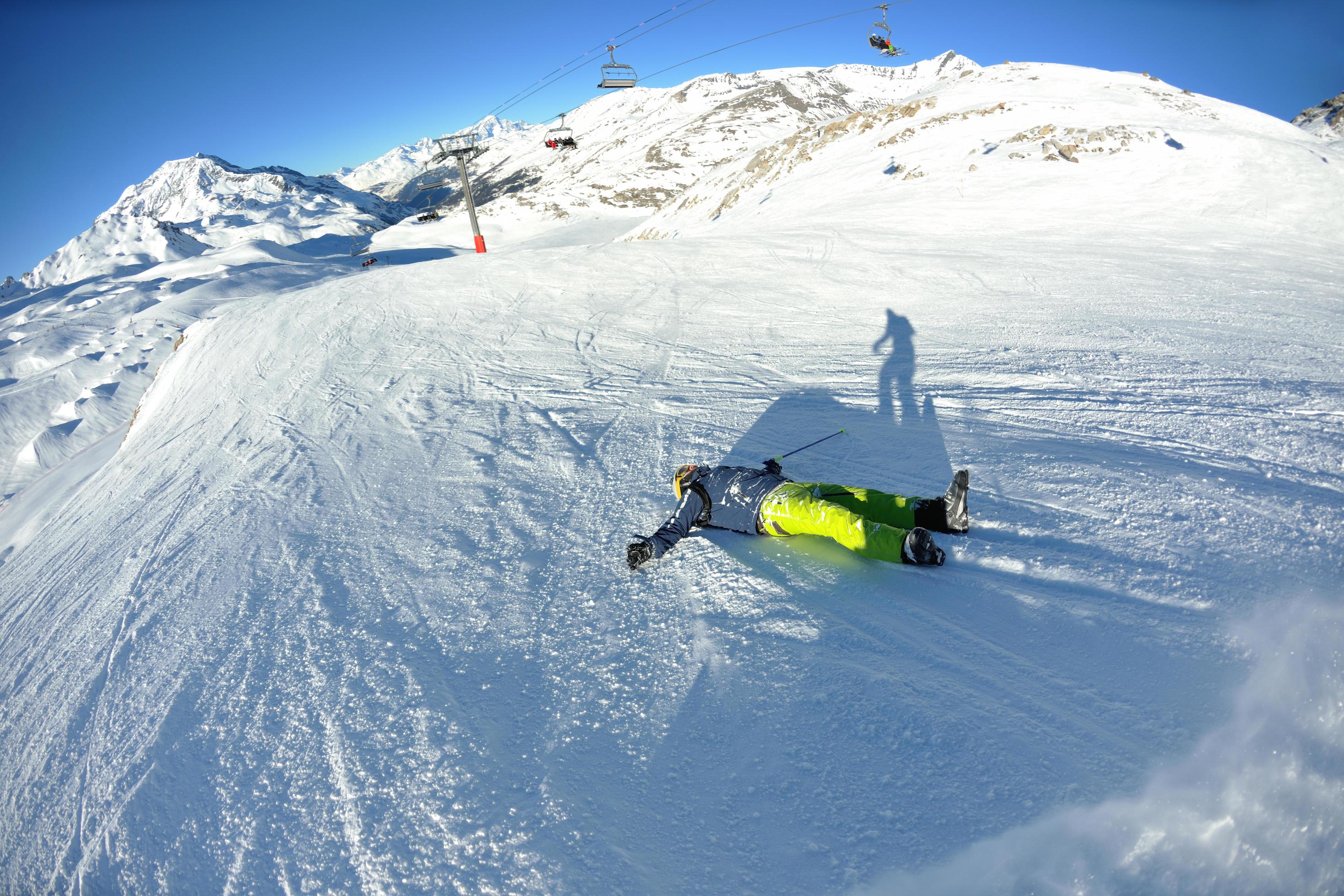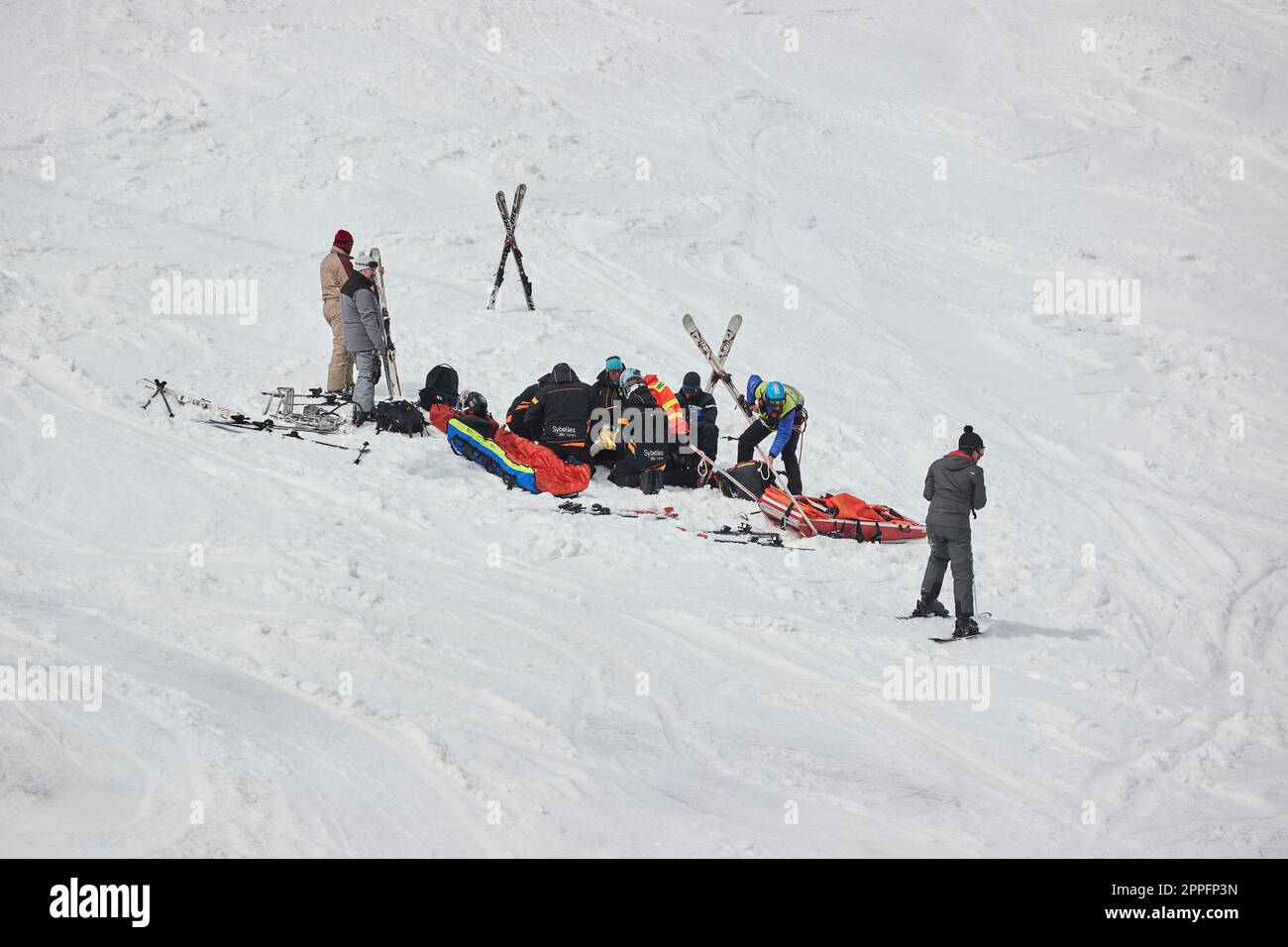Skiing accidents have become a growing concern for enthusiasts worldwide, as the sport continues to gain popularity. Whether you're a seasoned skier or just starting out, understanding the risks and safety measures associated with skiing is essential to ensuring a safe and enjoyable experience on the slopes. With proper preparation and awareness, you can minimize the chances of accidents and protect yourself while skiing.
Skiing is one of the most exhilarating winter sports, attracting millions of people annually. However, like any adventure sport, skiing comes with inherent risks. From minor injuries to severe accidents, it's important to recognize the potential dangers and take preventive measures. This article aims to provide a comprehensive guide to skiing accidents, offering valuable insights and practical advice for skiers of all levels.
By the end of this article, you will have a deeper understanding of the causes of skiing accidents, the importance of safety equipment, and the steps you can take to avoid accidents. Let's dive into the details and equip yourself with the knowledge you need to stay safe on the slopes.
Read also:Robin Givens And Brad Pitt Exploring Their Connection And Impact On Hollywood
Table of Contents
- Introduction to Skiing Accidents
- Statistics on Skiing Accidents
- Common Causes of Skiing Accidents
- Safety Equipment and Measures
- Preventing Skiing Accidents
- Types of Injuries in Skiing
- First Aid for Skiing Injuries
- Ski Resort Safety Protocols
- Legal Aspects of Skiing Accidents
- Conclusion and Final Thoughts
Introduction to Skiing Accidents
Skiing accidents occur when skiers experience an unexpected fall or collision while skiing. These accidents can range from minor scrapes to life-threatening injuries. Understanding the nature of skiing accidents is the first step toward preventing them. The sport demands a combination of skill, physical fitness, and awareness of the surroundings.
Many factors contribute to skiing accidents, including environmental conditions, skier behavior, and equipment malfunctions. While skiing is a thrilling activity, it requires a high level of responsibility from both skiers and ski resorts to ensure safety.
For beginners, the fear of accidents might seem daunting. However, with the right knowledge and precautions, skiing can be a safe and enjoyable experience. Let’s explore the statistics and causes of skiing accidents in the following sections.
Statistics on Skiing Accidents
Data from the National Ski Areas Association (NSAA) indicates that skiing accidents are relatively rare compared to the number of participants. However, when accidents do occur, they can be serious. According to the NSAA, approximately 0.5-1.5 fatalities occur per million skier visits annually.
Other statistics show that:
- Approximately 60% of skiing accidents involve falls.
- Collisions with objects or other skiers account for around 20% of accidents.
- Head injuries are the most common cause of fatalities in skiing accidents.
These statistics highlight the importance of wearing appropriate safety gear and adhering to skiing regulations.
Read also:Porschla Coleman The Rising Star In The World Of Entertainment
Common Causes of Skiing Accidents
Environmental Factors
Environmental conditions play a significant role in skiing accidents. Weather changes, such as sudden snowstorms or icy conditions, can increase the risk of accidents. Skiers should always check weather forecasts before heading out and adjust their plans accordingly.
Skier Behavior
Reckless behavior is another leading cause of skiing accidents. Skiers who exceed their skill level, ignore trail signs, or ski too fast are more likely to experience accidents. It’s crucial to ski within your capabilities and respect the rules of the slopes.
Equipment Malfunctions
Malfunctioning equipment, such as poorly adjusted bindings or worn-out skis, can also contribute to accidents. Regular maintenance and inspection of skiing equipment are essential to ensure safety.
Safety Equipment and Measures
Wearing the right safety equipment is one of the most effective ways to prevent skiing accidents. Helmets, goggles, and protective padding can significantly reduce the severity of injuries. Here’s a list of essential safety gear:
- Helmets: Protect against head injuries, which are the leading cause of fatalities in skiing accidents.
- Goggles: Provide better visibility and protect eyes from snow glare and debris.
- Bindings: Ensure proper release in case of a fall, reducing the risk of leg injuries.
Additionally, skiers should undergo proper training and practice basic skiing techniques to enhance their skills and confidence on the slopes.
Preventing Skiing Accidents
Know Your Limits
Skiers should always ski within their skill level. Beginners should start on gentle slopes and gradually progress to more challenging terrain as they gain experience. Overestimating your abilities can lead to dangerous situations.
Follow Trail Signs
Trail signs indicate the difficulty level and potential hazards of a slope. Skiers should always pay attention to these signs and avoid skiing on trails that exceed their capabilities.
Stay Hydrated and Rested
Fatigue and dehydration can impair judgment and increase the risk of accidents. Skiers should take regular breaks and stay hydrated throughout the day.
Types of Injuries in Skiing
Skiing accidents can result in various types of injuries, ranging from minor bruises to severe fractures. Common injuries include:
- Head injuries: Concussions and skull fractures are among the most serious skiing injuries.
- Leg injuries: Knee ligament tears, such as ACL injuries, are prevalent in skiing accidents.
- Upper body injuries: Broken arms, wrists, and shoulders often occur from falls or collisions.
Knowing the types of injuries that can occur helps skiers take appropriate precautions and seek medical attention when necessary.
First Aid for Skiing Injuries
In the event of an accident, immediate first aid can make a significant difference in the outcome. Here are some basic first aid steps for common skiing injuries:
- Head injuries: Keep the person still and avoid moving them until professional help arrives.
- Fractures: Immobilize the affected area and apply ice to reduce swelling.
- Cuts and bruises: Clean the wound with antiseptic and apply pressure to stop bleeding.
Always call for professional medical assistance if the injury appears severe or if the person is unconscious.
Ski Resort Safety Protocols
Ski resorts play a critical role in ensuring the safety of skiers. They implement various safety protocols, such as:
- Posting clear trail signs and warnings.
- Employing trained ski patrol teams to respond to accidents.
- Maintaining slopes and grooming trails regularly.
Skiers should familiarize themselves with these protocols and cooperate with resort staff to maintain a safe environment.
Legal Aspects of Skiing Accidents
In the event of a skiing accident, legal considerations may arise, especially if negligence is involved. Skiers should be aware of their rights and responsibilities. For example:
- Skiers assume a certain level of risk when participating in the sport.
- Resorts are responsible for maintaining safe conditions and providing adequate safety measures.
- In case of an accident, skiers may seek legal advice to determine if they have a valid claim.
Consulting a legal expert specializing in skiing accidents can provide clarity and guidance in such situations.
Conclusion and Final Thoughts
In conclusion, skiing accidents are a serious concern that requires attention and preventive measures. By understanding the causes of accidents, wearing proper safety gear, and following safety protocols, skiers can significantly reduce the risk of injuries. Remember to always ski responsibly, stay informed, and prioritize your safety.
We encourage you to share this article with fellow skiers and leave your thoughts in the comments below. Your feedback helps us improve and provide more valuable content. For more insights into skiing safety and tips, explore our other articles on the website.


